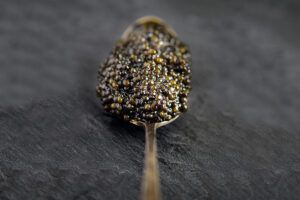If you had asked somebody to play padel just a few years ago, chances are they’d have thought you meant that little beach bat-and-ball game. Not any more. With an estimated 20 million players worldwide, 64 official federations, 500,000 federated players and investment from footballers, tennis stars, sports moguls and savvy entrepreneurs, padel is taking the world by storm. What’s the secret behind this staggering growth, what’s the game all about, and where is it heading? Where can you play it in Ibiza?
Padel was invented in 1969 by Mexican businessman Enrique Corcuera. He had initially wanted to build a tennis court at his home in Acapulco, but realized he didn’t have the space, so decided to build a smaller court, using the surrounding walls as an integral part of the game. While the sport itself is easily distinguishable from both tennis and squash it neatly represents a hybrid of the two. Using smaller, perforated rackets and a lighter tennis-style ball, it’s an intense game played on compact and futuristic courts. But while top players are tremendously athletic, any player at any level can play and enjoy it.

Padel’s Mexican origins mean it has always been popular in Spanish-speaking nations, but over the past decade there has been a seismic shift in the numbers of people playing it. In Spain it is now second only to football in terms of active participants with six million players. Last year over 1 million padel rackets were sold in the country, which now has over 12,000 courts. The fast growth is global: Argentina is close behind Spain in terms of courts, players and growth. In Italy the number of courts has grown to 5,000 in under two years.
Big names are also getting involved, raising both the sport’s profile and the funds required to grow it. Lionel Messi, David Beckham, Rafael Nadal and Carlos Sainz Jr are all huge fans, while Liverpool football manager Jürgen Klopp loves the game so much he had a padel court installed at the club’s Kirkby training ground. Zlatan Ibrahimovic has opened centres all over Sweden and Zinedine Zidane owns a line of courts, Z5Padel. Even Scotland has jumped on board with Game4Padel, backed by Andy Murray and Pep Guardiola. So what makes this simple game so popular with so many?

Put simply, it is easier to learn than tennis, and lots of fun. Padel is usually played in doubles. The court is about 25% smaller than a traditional tennis court, measuring 20m by 10m, and surrounded by walls, which are usually part glass, part metal mesh. If the ball hits the wall after being hit on the ground, you can still play it. The scoring is the same as in tennis, but you can also play the ball off the walls. When serving, you have to let the ball bounce once on the floor and hit it at waist level. After the ball hits the floor, you can let it hit the wall or fencing once or more before you play it back. Out-of-court plays are authorized, leading to some dramatic flourishes. You also have a wall of glass behind you, so you always have a second chance when the ball passes, unlike in tennis.
So padel continues to grow. The consensus is that it will reach the same popularity in the UK, France, Sweden, Norway and Portugal as it has in Spain in the years to come. Japan, South Korea and Middle Eastern nations are already implementing the structure to cope with a wide increase in participation, with the International Padel Federation (FIP) now boasting 65 member states and targeting 150 by 2025.

Formed in Madrid in 1991, the FIP aims to foster growth worldwide, and to promote the development of the game for all ages and all people. More than this, it also wants to bring together all affiliated regional federations, national member federations, clubs, players, coaches, padel industries and all partners. The organization governs the official Premier Padel tour, which like tennis has four Grand Slams – held in Paris, Doha, Mexico and Rome. Backed by the same Qatar Sports Investments group that owns Paris Saint-Germain, the tour is facilitating the rise of the sport as it starts to expand its global reach in 2022. One of the reasons Qatar is heavily involved is that PSG president Nasser Al-Khelaifi was instrumental in formulating Premier Padel.
In early July 2022 Televisión Española (TVE) signed a major deal to showcase the Premier Padel tour in Spain for the 2022 season, beginning its coverage with July’s Greenweez Paris Premier Padel Major at the iconic Stade Roland-Garros tennis complex. With this sustained investment, growth and, above all, interest from millions of players worldwide, who’s to say it won’t be long before top-ranking FIP players Alejandro Galán Romo and Juan Lebrón Chincoa are as recognizable and bankable as Nadal and Djokovic?











